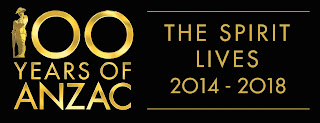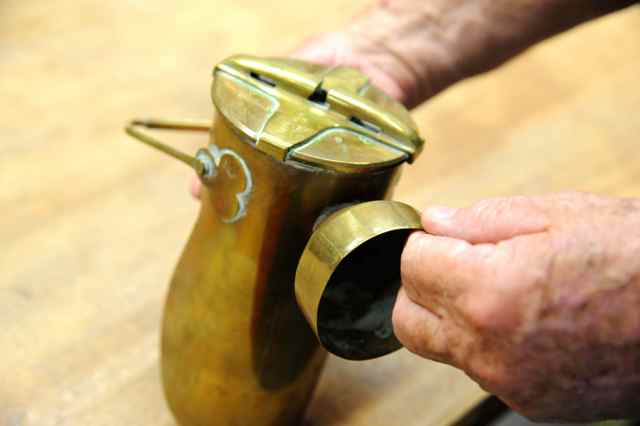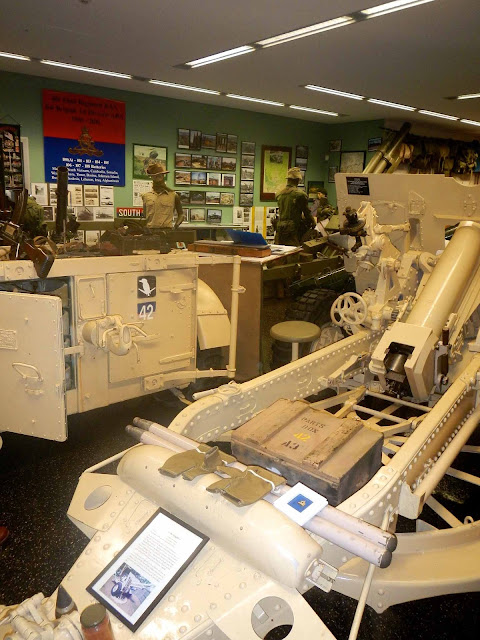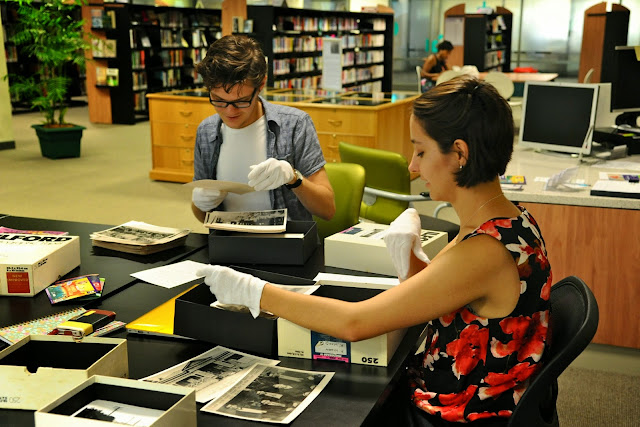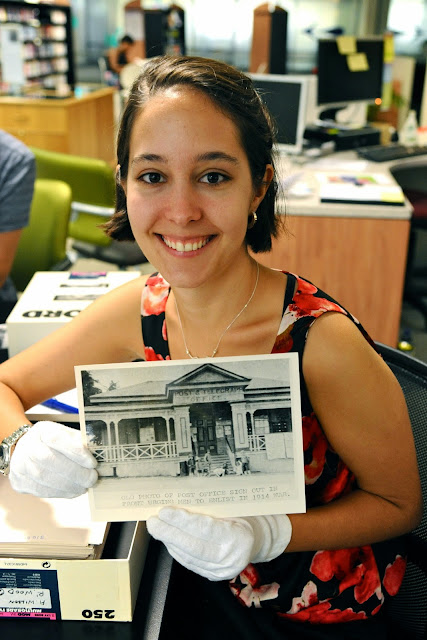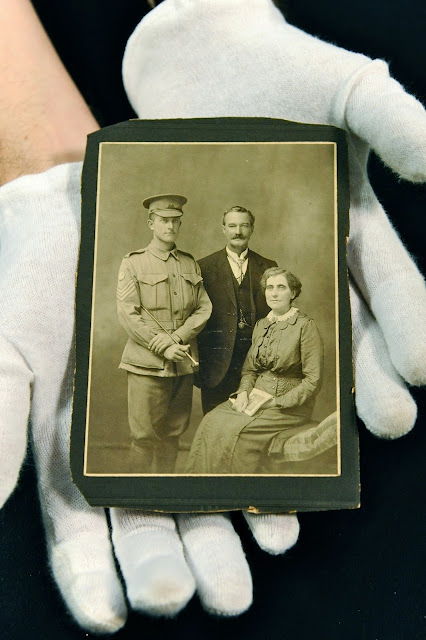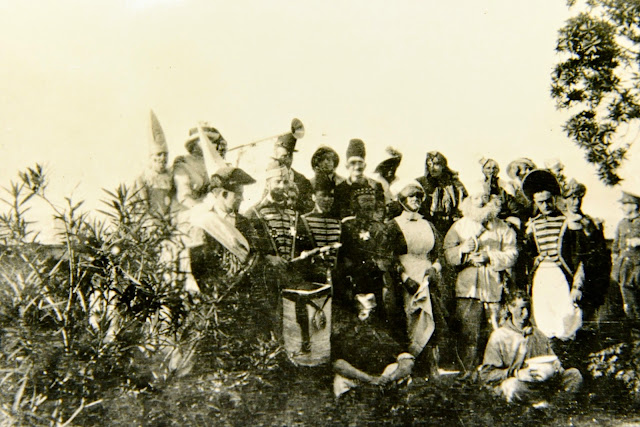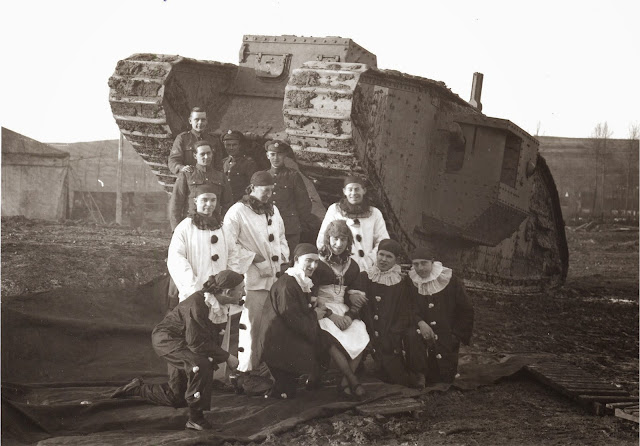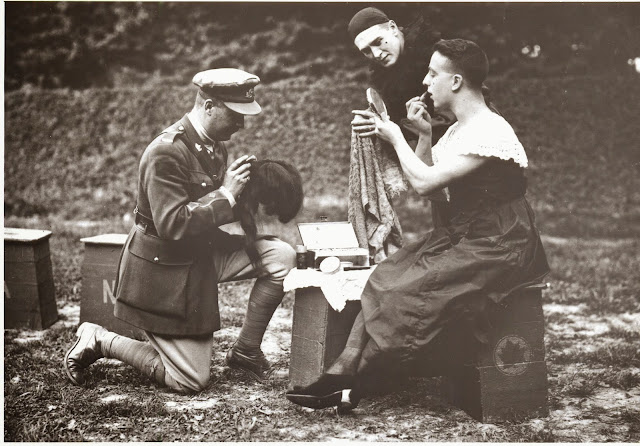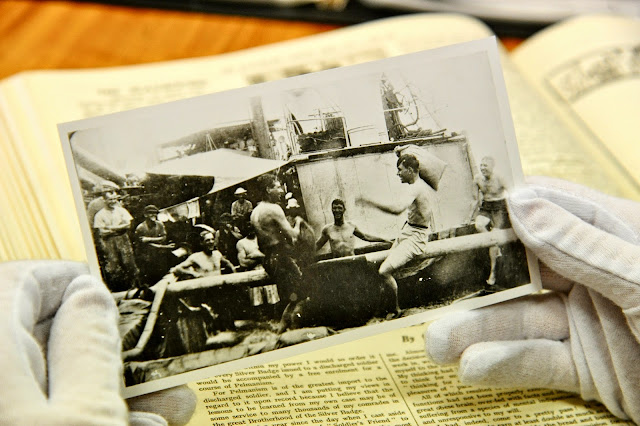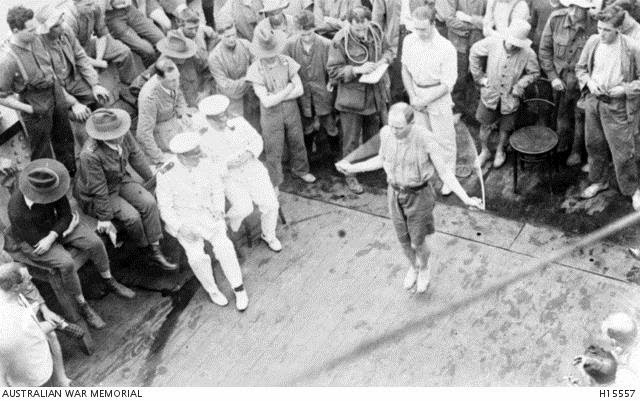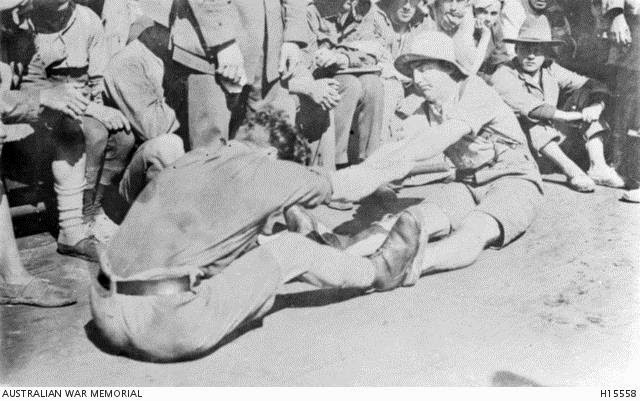 |
| Photograph: AWM Collection Caption: Western Front c. 1916. A large quantity of empty shell casings
and ammunition boxes representing a minute fraction of the ammunition
used by the British Army in the bombardment of Fricourt. (Donor British
Official Photograph A111) |
The landscape in conflict zones on the Western Front had been drastically transformed by the onset of the world’s first industrial war. In addition to the direct changes wrought by bombardment with high explosives the landscape was littered with spent ammunition casings, abandoned weapons and machinery, and various other battlefield debris. However for some resourceful soldiers the wreckage of war represented potential, and they repurposed that wreckage into both practical and decorative items. Such items are today collectively termed ‘trench art’.
 |
| Photograph: AWM Collection Caption: Trench art kitchen scoop : Sapper S K Pearl, 5 Field Company Engineers, AIF |
Materials such as bone, wood, cloth, metal and spent ammunition shells were made into ashtrays, decorative maps, picture frames, broaches, letter openers, vases, cigarette lighters, miniature airplanes and tanks, and keepsakes known as ‘sweetheart jewelry’ intended as gifts for loved ones back home. Artworks ranged from practical items with simple inscriptions, to elaborate decorative pieces, intended as works of art that highlighted the skill and expertise of the maker.
While the name may imply that these items were being made within the trenches during battle, the majority of items were actually produced during soldiers’ ‘off time’, either between battles or recovering from serious wounds in hospitals.
 |
| Photograph: AWM Collection Caption: Trench art photograph frame : Lieutenant W C Thompson, 1 Squadron, Australian Flying Corps |
Our interest in these soldier made items is not simply in what was being made, but rather why items were being made and what this can tell us about the cultural lives of soldiers between battles. These items reflect an important cultural activity by soldiers that had a number of purposes and outcomes including:
1. The Alleviation of Boredom: creating trench art was a good distraction from the discomforts of war and it helped many soldiers to pass the time and occupy their minds and hands.
2. Relaxation: creating something often helped soldiers to ‘switch off’ from their fighting role and it was often implemented as a therapeutic activity for wounded soldiers recovering in hospitals. It also provided wounded soldiers with a positive way to contribute to the war effort with many of their handmade items being sold for fundraising.
3. The Creation of trophies and talismans: artworks were often created with specially chosen materials that held particular value or symbolised a military victory or success. Other items might also serve this purpose and British anthropologist Nicholas J. Saunders has studied the production of talismanic bullets engraved with a soldier’s name in the belief that it would protect him (Saunders 34).
4. Identification: Within the battlefield itself signs and ‘mascots’ were sometimes produced that stood as a symbol for a particular group or unit. For example, at the entrance to the Catacombs, Hill 63 (an extensive underground dugout) Australian troops erected a Kangaroo ‘mascot’.
 |
| Photograph: AWM Collection Caption: A group of 7th Field Company of Australian Engineers at the entrance to
the Catacombs - a system of tunnels built into Hill 63, in the Messines
Sector. Note the cut out kangaroo silhouette at the top of the tunnel. |
5. Reminders of loved ones: items were often intended as gifts to be sent home to loved ones, evidenced by the countless examples of ‘sweetheart jewellery’. Art historians Joe Bageant and Lisa Slade have suggested that soldiers created artworks to project themselves into the world. For some soldiers, faced with the possibility of death, creating something of themselves to send back to their loved ones was particularly important.
6. The Maintenance of humanity: The desire to scribble and decorate things and to interpret the outside world through forms of art is part of human nature. Perhaps during times of war- a potentially dehumanizing activity- maintaining something innately human becomes increasingly important and as such trench art may be seen to represent an expression of humanity in extreme circumstances.
 |
| Photograph: AWM Collection Caption: Trench art paper knife : Private A J Hinchley, 1 Battalion, AIF |
The sheer number of trinkets and trench art items produced by soldiers during the First World War is indicative of the cultural role arts and craft played within the environment of war. Made from battlefield debris trench art items are quite literally the creations of war.
References/ Further reading:
- Saunders, Nicholas, J. “Trench Art”. History Studies 53, 11 (2003): 32-37.
- Slade, Lisa. “Trench Art: Sappers and Shrapnel”. Artlink, 35, 1 (2015): 21-25
- Bageant, Joe. “The Trench Art of World War I”. Military History, 21, 5(2004): 62-68







